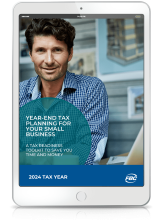Contents
Last updated: Feb. 28, 2023
If you’re self-employed, the Canada Revenue Agency (CRA) needs you to take an extra step when it comes to filling out your business income tax return. In addition to declaring your income and completing the T2125 (which is used to report your business and professional income and expenses), you also need to provide the CRA with your industry code.
Your industry code is a six-digit number that corresponds to your business or occupation.
Statistics Canada uses the information gleaned from industry codes to track business trends, and the CRA uses industry codes to compare similar businesses in the same industry. The CRA will pay attention to any deviations from the industry standard so they can follow up with a review or an audit.
What is the industry code for my business?
The industry codes used by the CRA are found in the North American Industry Classification System (NAICS). The NAICS is updated every five years, the most recent update was in January 2022 (NAICS 2022 version 1.0) and represents the largest update to the coding system since 2002.
In Canada, the NAICS follows a hierarchal structure and can have up to six digits. At its highest level (Level 1, two-digit codes), it divides the economy into 20 main sectors, some of which include:
- Agriculture, forestry, fishing, and hunting (Code 11)
- Mining, quarrying, and oil and gas extraction (Code 21)
- Construction (Code 23)
- Manufacturing (Code 31-33)
- Retail trade (Code 44-45)
- Transportation and warehousing (Code 48-49)
- Accommodation and food services (Code 72)
We are ready to help.
Book a free, no obligation 15-minute call to learn more.
The lower levels in the hierarchy allow for additional differentiation in economic activities such as for sub-sectors and specific categories within industries.
- Level 2: subsectors (three-digit codes)
- Level 3: industry groups (four-digit codes)
- Level 4: industries (five-digit codes)
- Level 5: Canadian industries (six-digit codes)
NAICS class titles can include superscript symbols and are used to indicate comparability between Canada, the United States and Mexico:
- CAN (Canadian industry only)
- MEX (Canadian and Mexican industries are comparable)
- US (Canadian and United States industries are comparable)
No superscript symbol indicates that Canadian, Mexican and United States industries are comparable.
Here are some examples of NAICS codes in use:
- You are a drywall contractor – your NAICS code is 238310 – Drywall and insulation contractors
- 23 – Construction (sector)
- 238 – Specialty trade contractors (sub-sector)
- 2383 – Building finishing contractors (industry group)
- 23831 – Drywall and insulation contractors (industry)
- 238310 – Drywall and insulation contractors (Canada)
- 238310US – indicates that Canadian and United States definitions for this business are comparable
- You operate a vegetable greenhouse – your NAICS code is 111419 – Other food crops grown under cover
- 11 – Agriculture, forestry, fishing and hunting (sector)
- 111 – Crop production (sub-sector)
- 1114 – Greenhouse, nursery and floriculture production (industry group)
- 11141 – Food crops grown under cover (industry)
- 111419 – Other food crops grown under cover
- 111419US – indicates that Canadian and United States definitions for this business are comparable
You should use the same code every year unless your business has undergone significant changes. However, since the codes may be updated, you may need to change the one you use when you file your annual income tax return.
What if my business makes income from more than one activity?
In most cases, if your business generates income from more than one activity, your business should be classified according to its “principal” or “primary activity”.
For example:
Gord operates a retail garden centre (444240 – nursery retailers and garden centres) and sells coffee to his clients (722512 – limited-service eating places). His business would be classified under 444240.
There are other, more complex applications for businesses engaging in more than one revenue-generating activity and they are covered in depth through the Statistics Canada website.
What if none of the codes describe my business?
The NAICS is pretty exhaustive, and has an industry code for virtually every occupation, from freight trucking, oil seed and grain farming, pet sitting and housekeeping to bookstores and butlers.
If you can’t find a matching description for your business, just choose the code that fits your business the best. You can also choose an industry or sub-sector.
Free Download: Year-End Tax Planning Strategies for Your Small Business
Many small business owners wait until spring to start thinking about their taxes, but this simple act of waiting could cost them thousands.
Fall is actually the best time to start think about your taxes. It allows you to get organized and assess what actions you can take before the end of the tax year to lower your future business or corporate income taxes.
Consider this toolkit your roadmap to help you get organized, reduce your tax burden, and keep more money in your pocket.
About FBC
With more than 70 years of Canadian tax experience, we offer unlimited tax preparation help, support and tax advice for one flat fee. Our tax experts will run the numbers to create a custom tax return that helps minimize headaches and maximize your tax savings.
Leave your unique tax situation to us. We’ll get you every dollar you deserve. Book online or call us at 1-800-265-1002.



